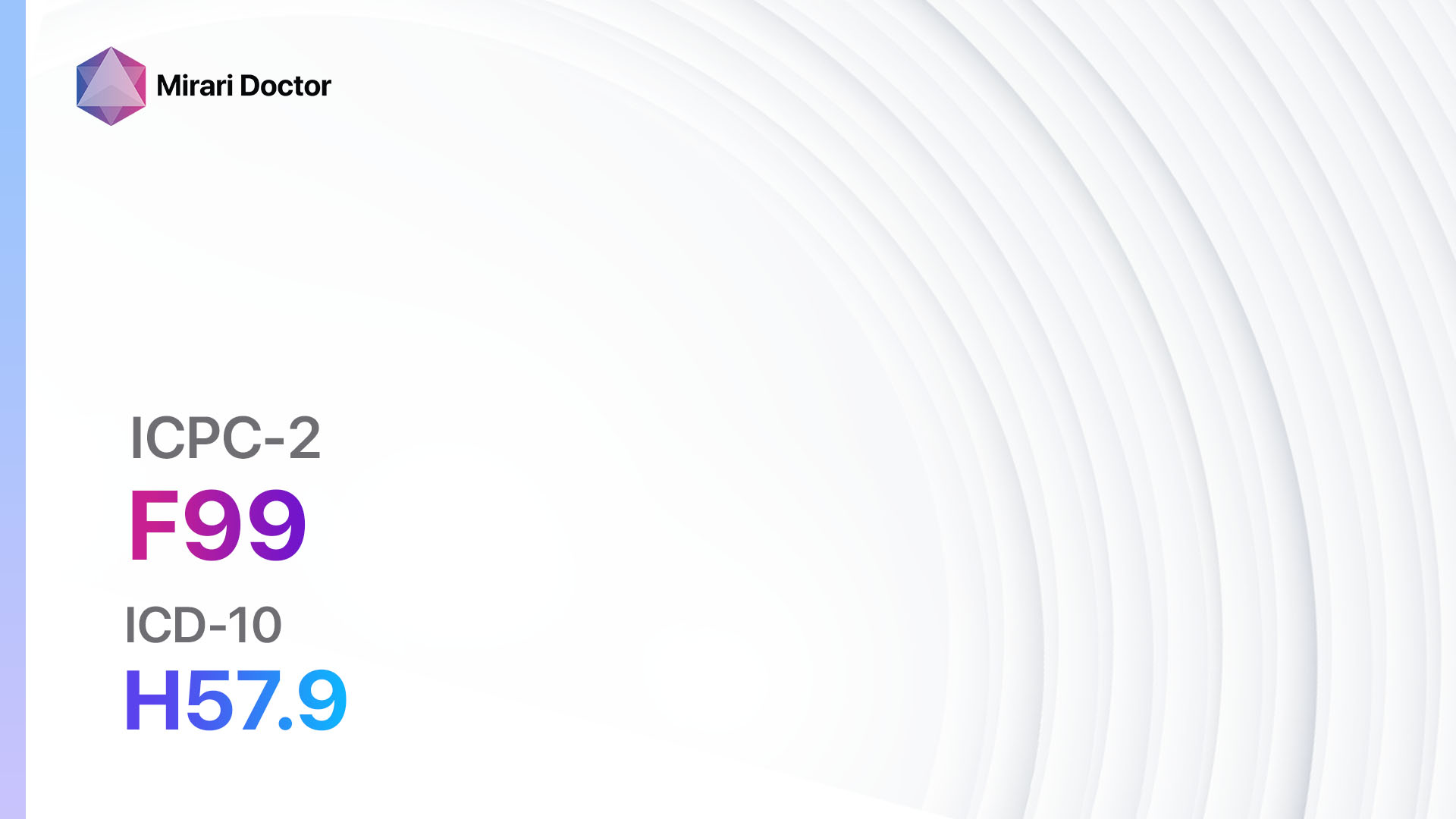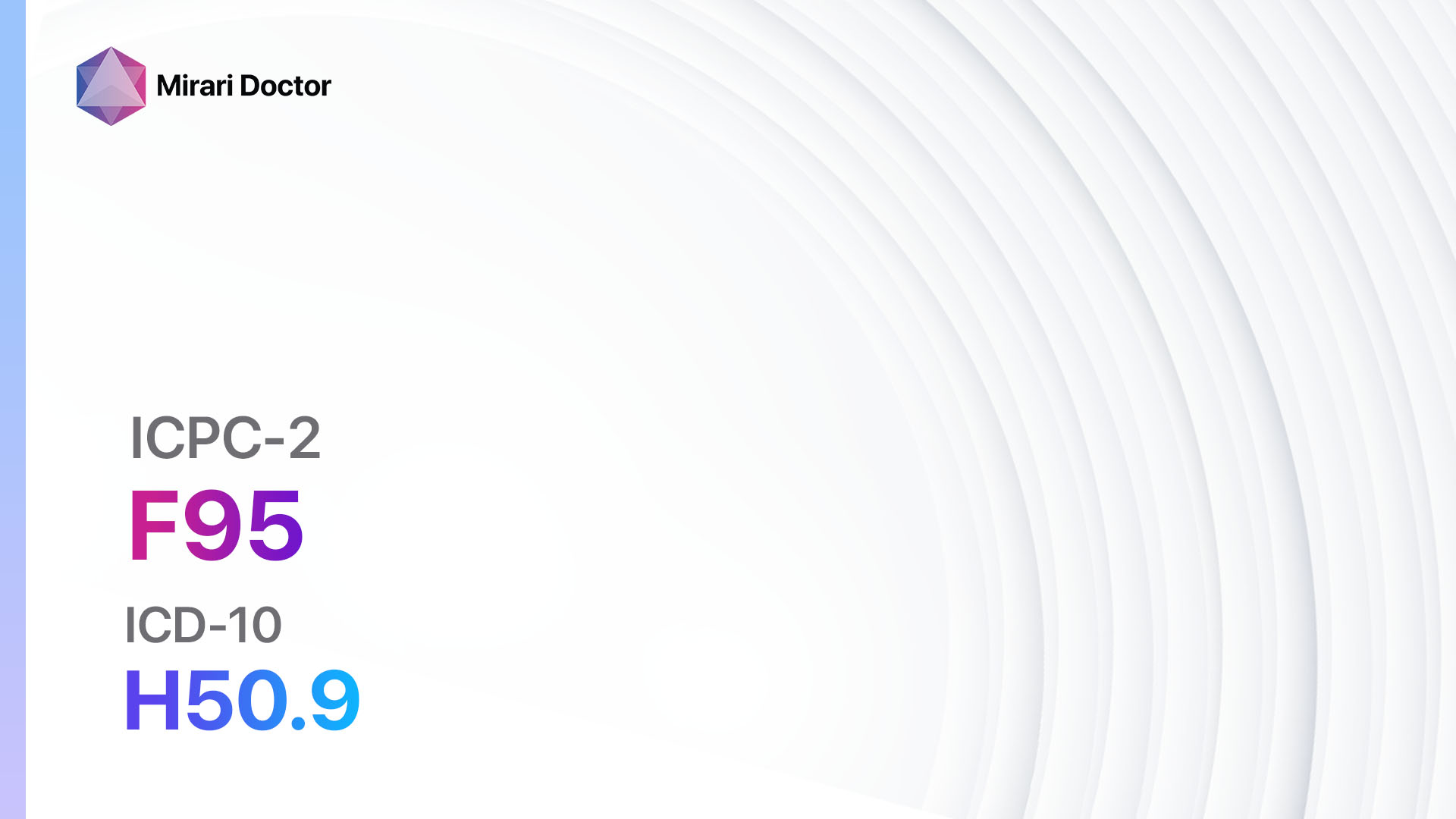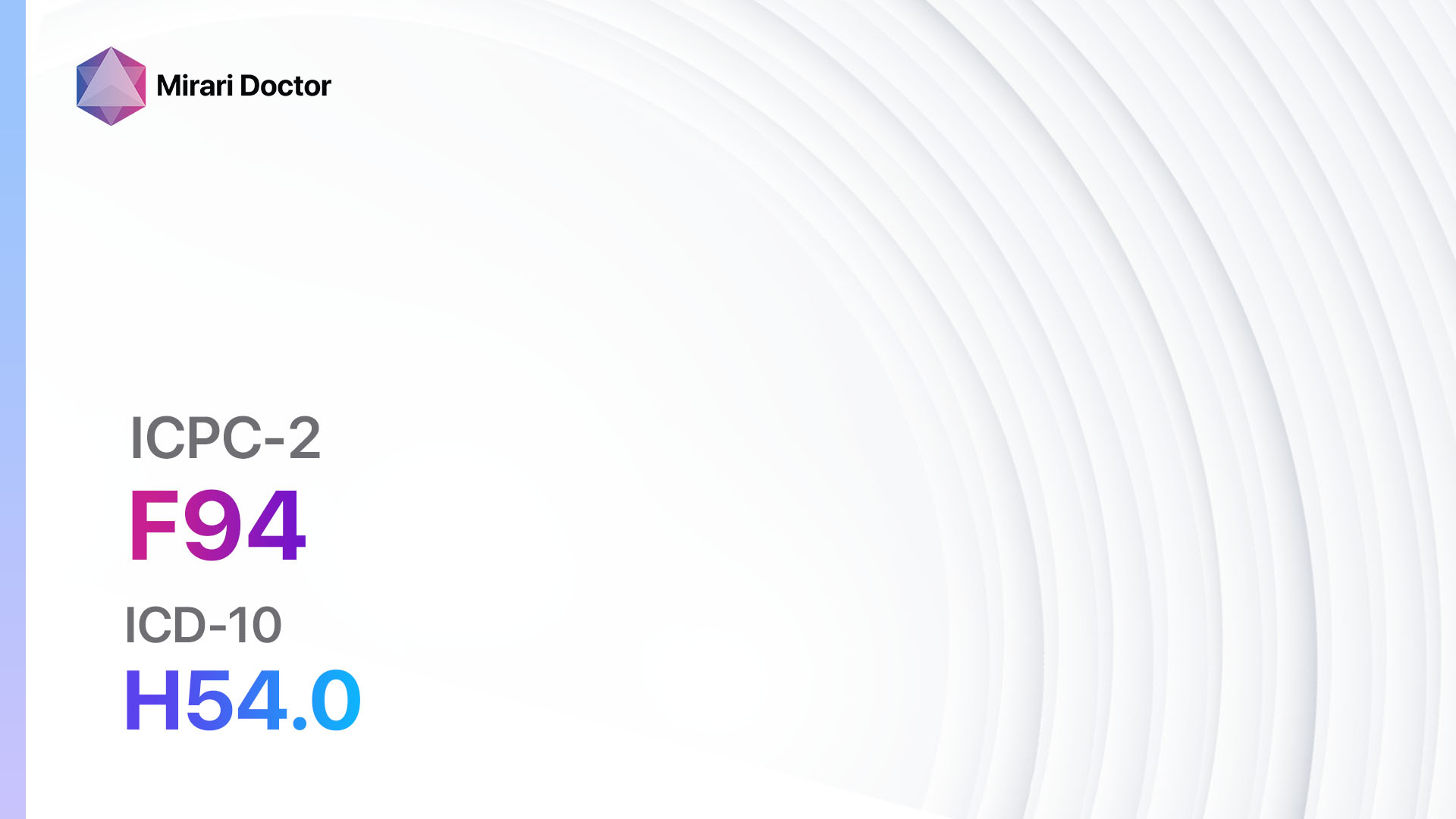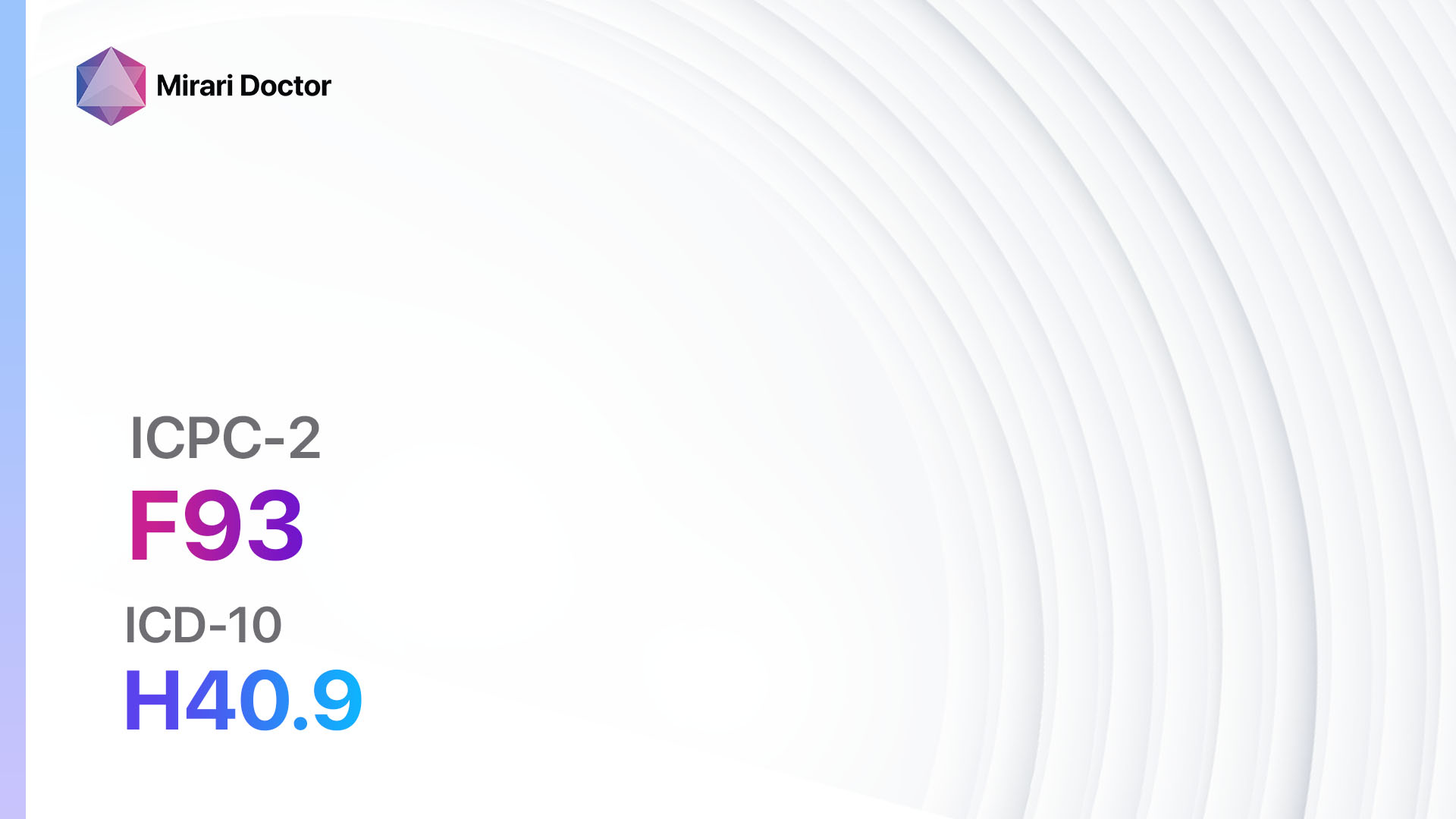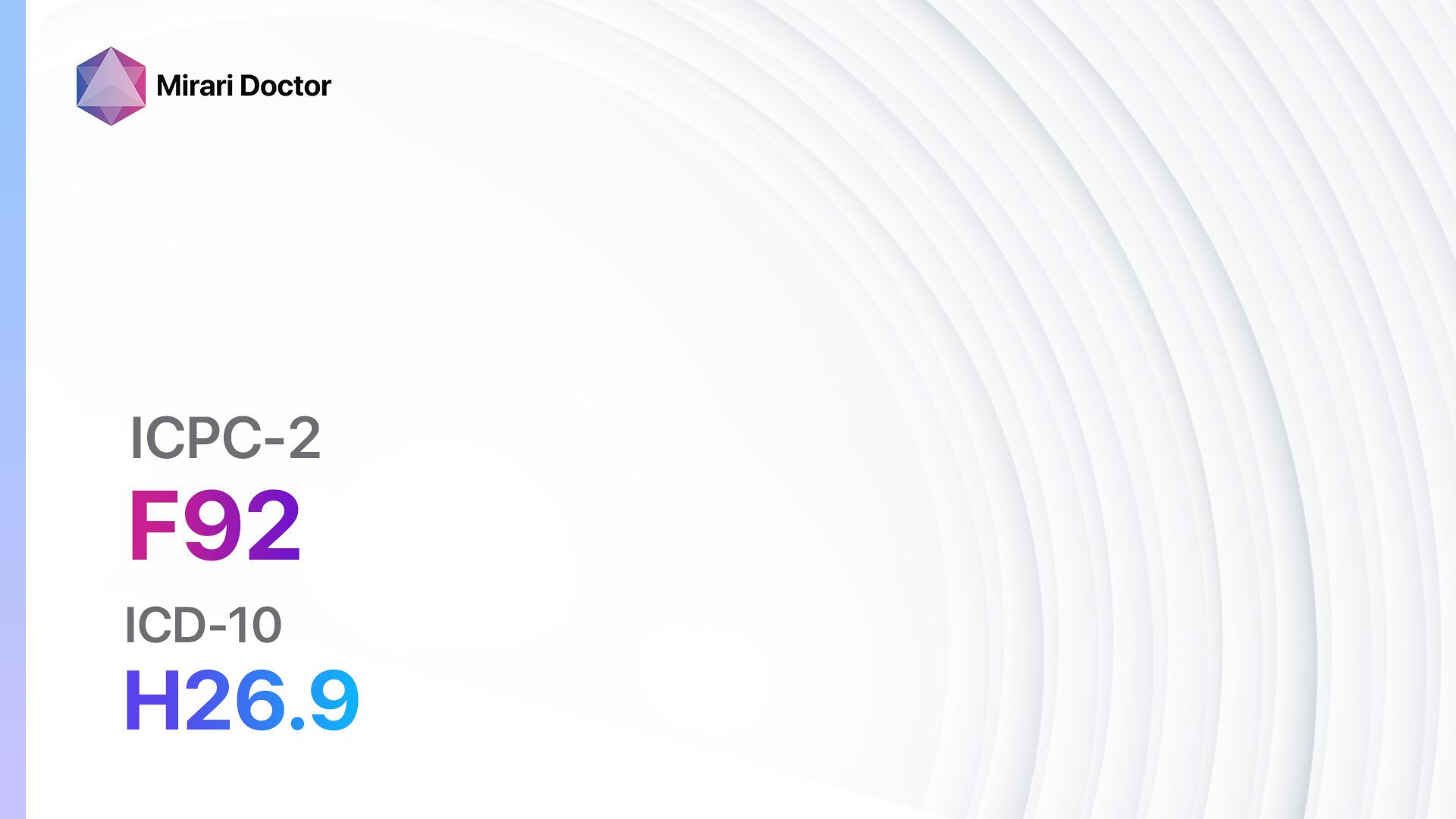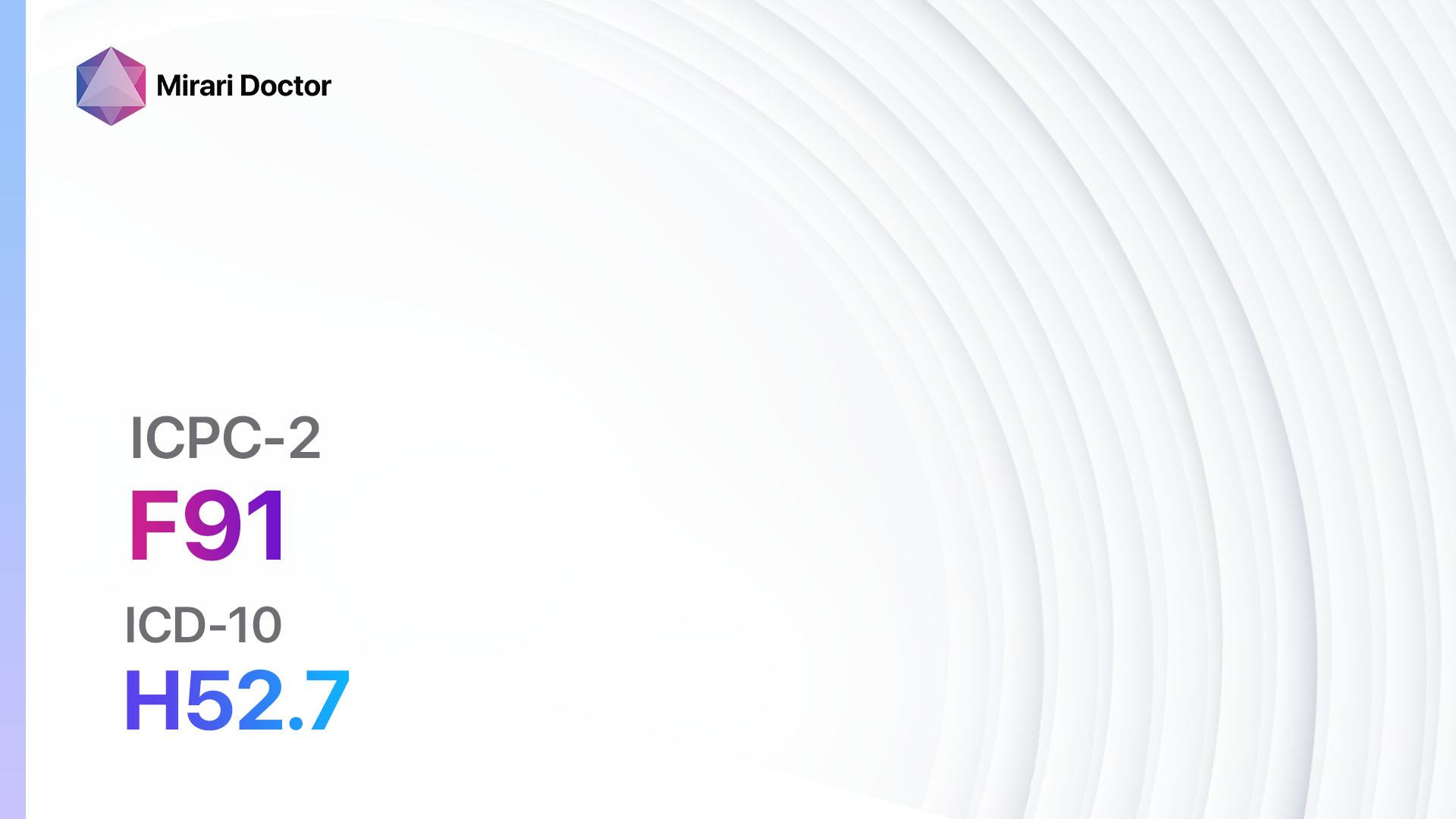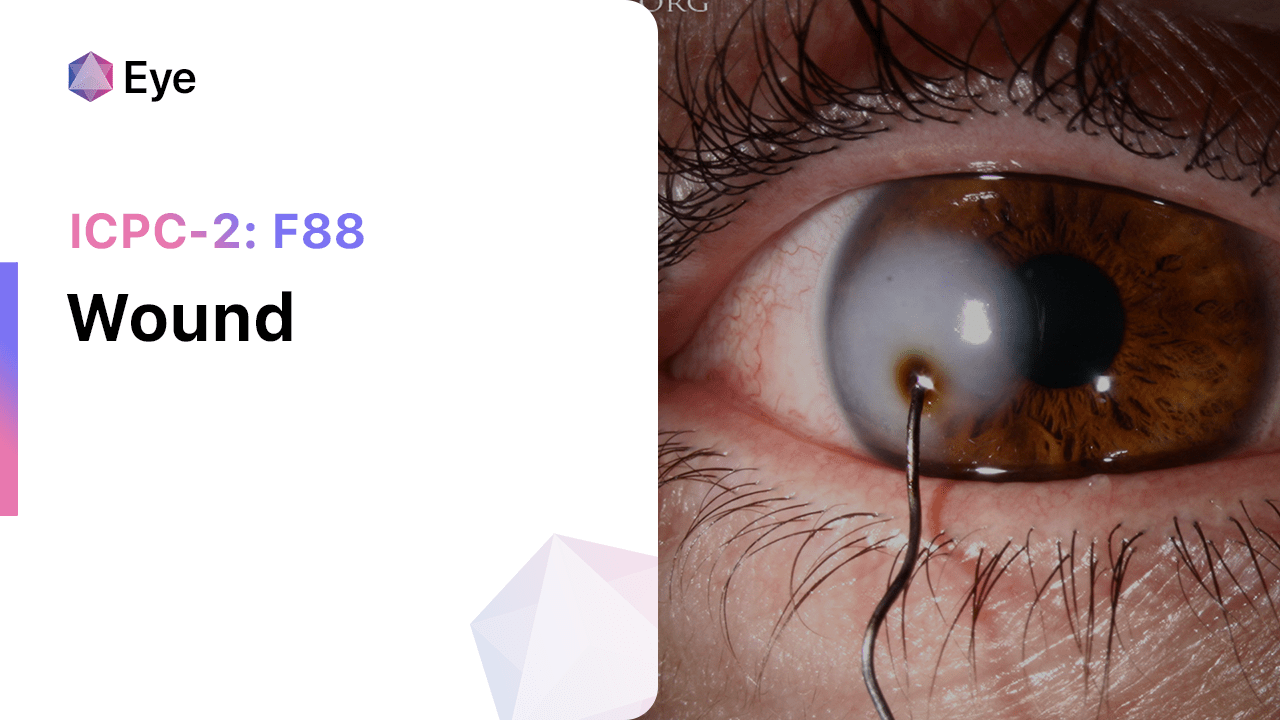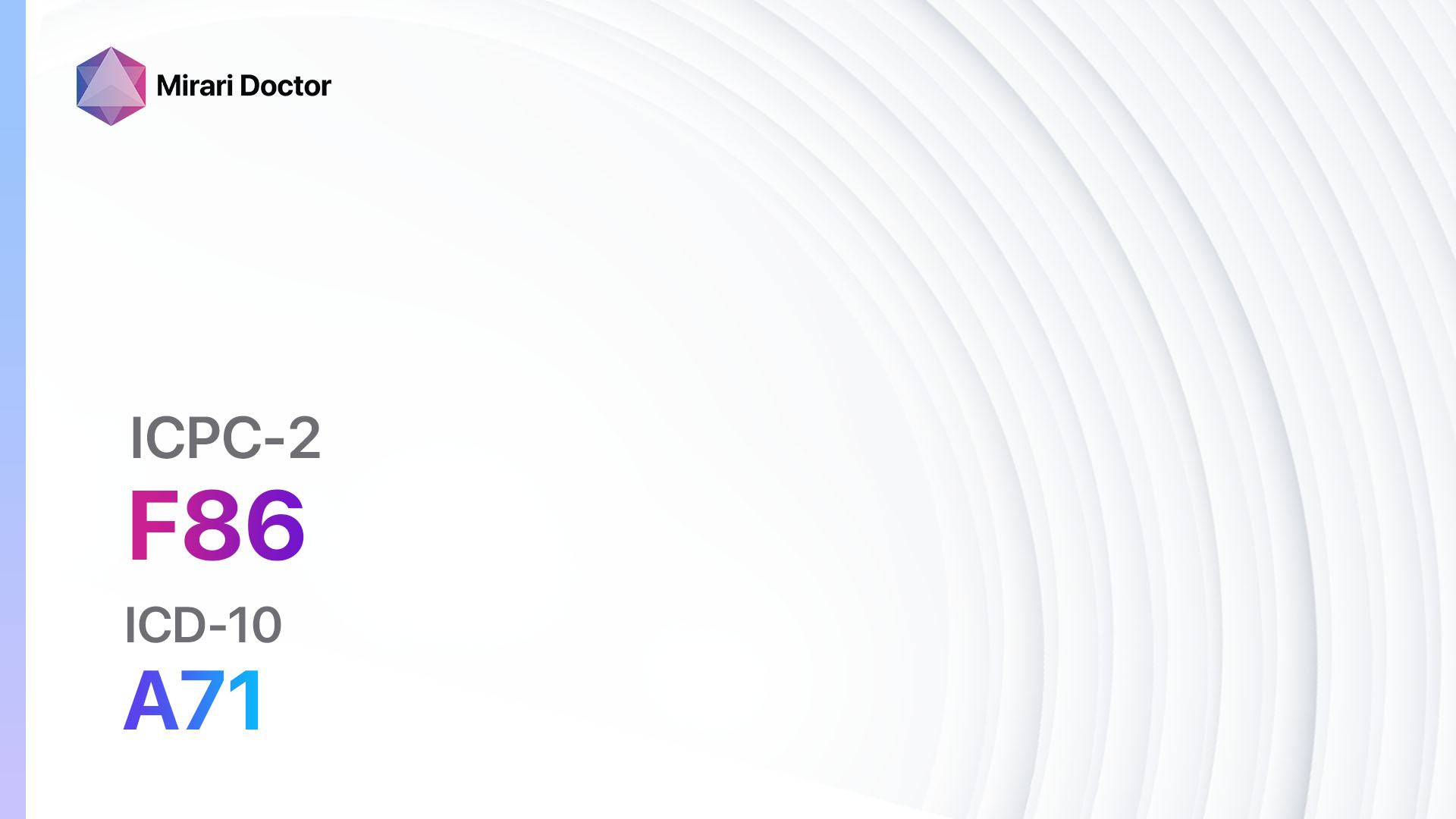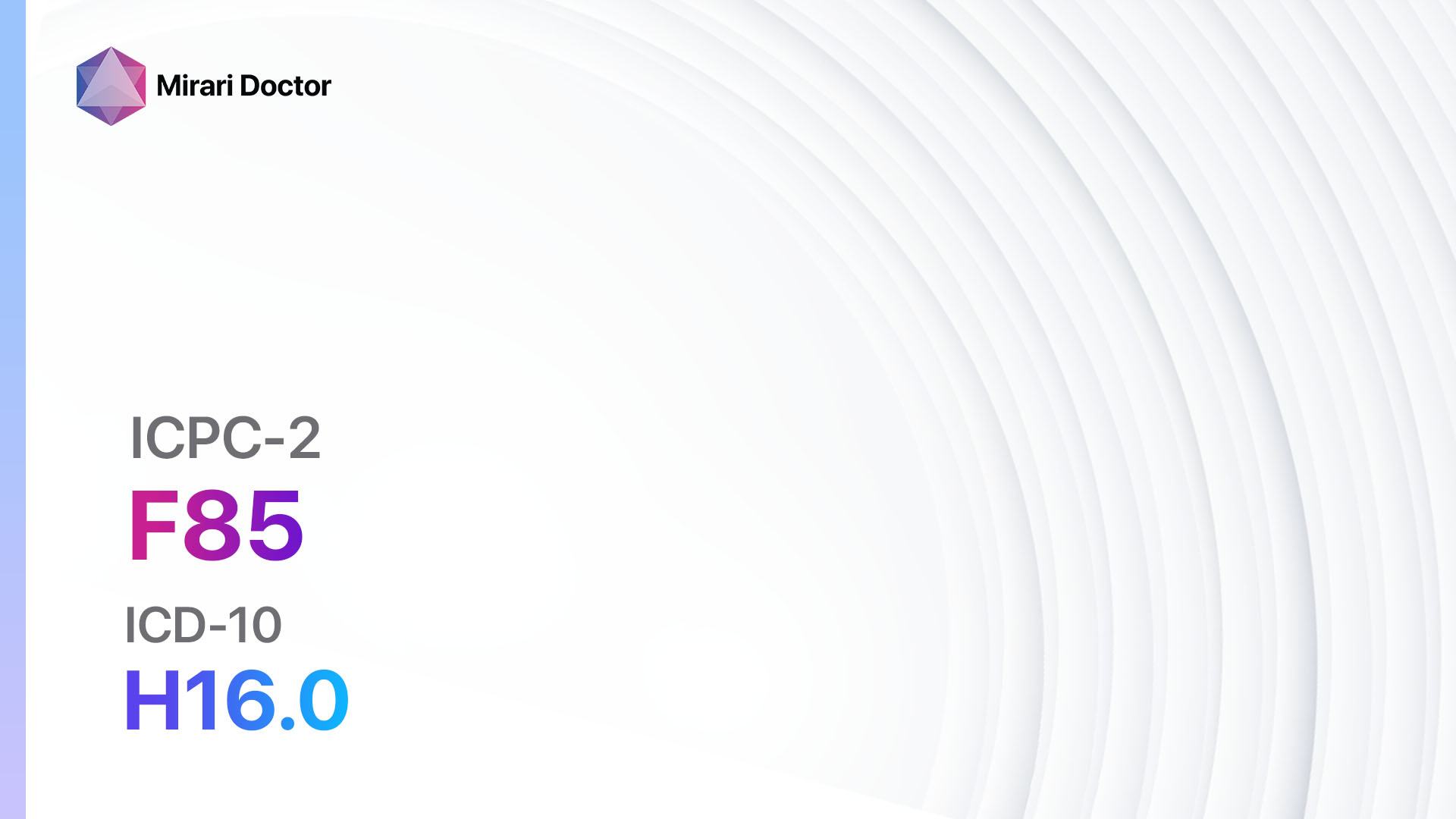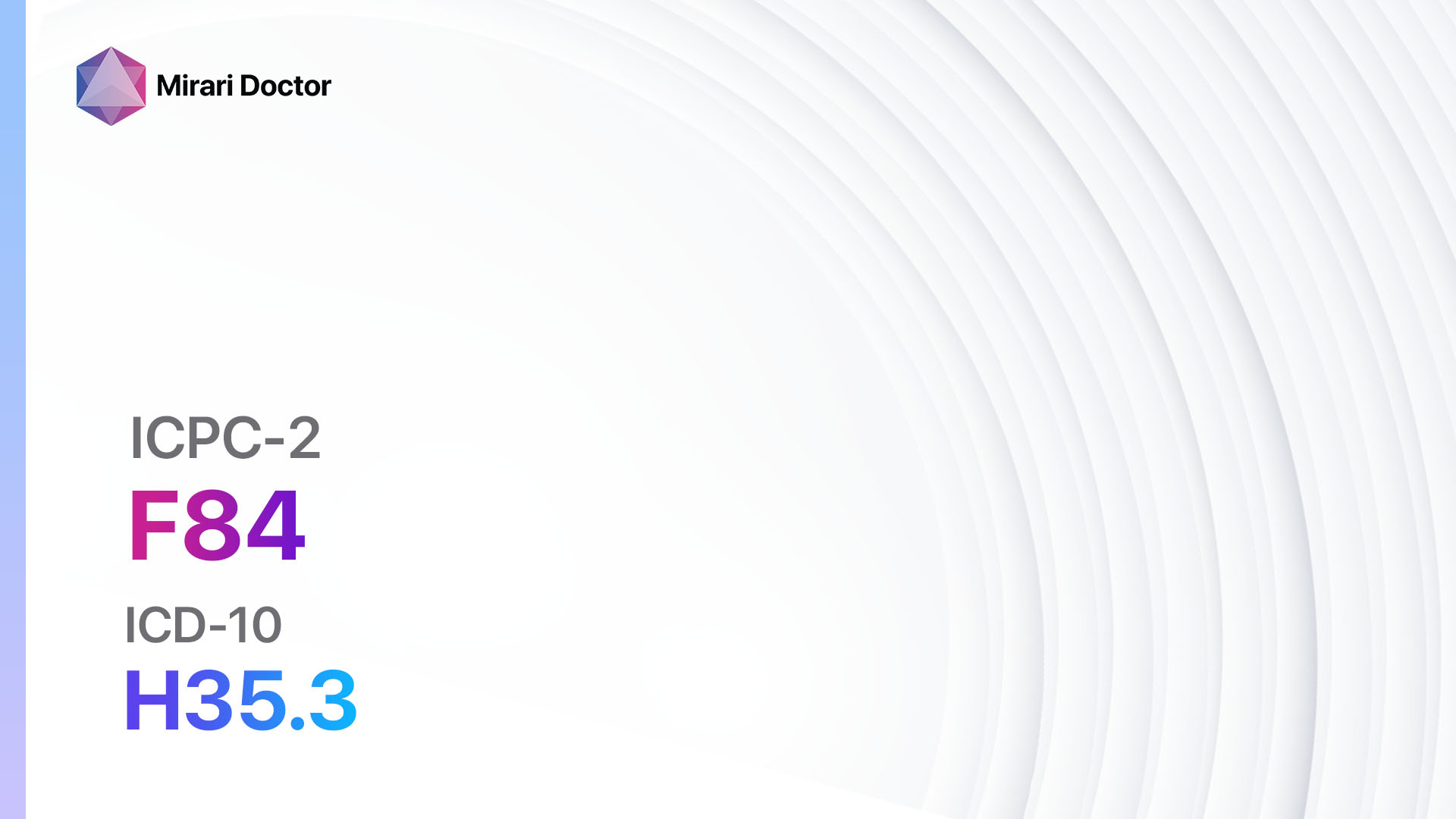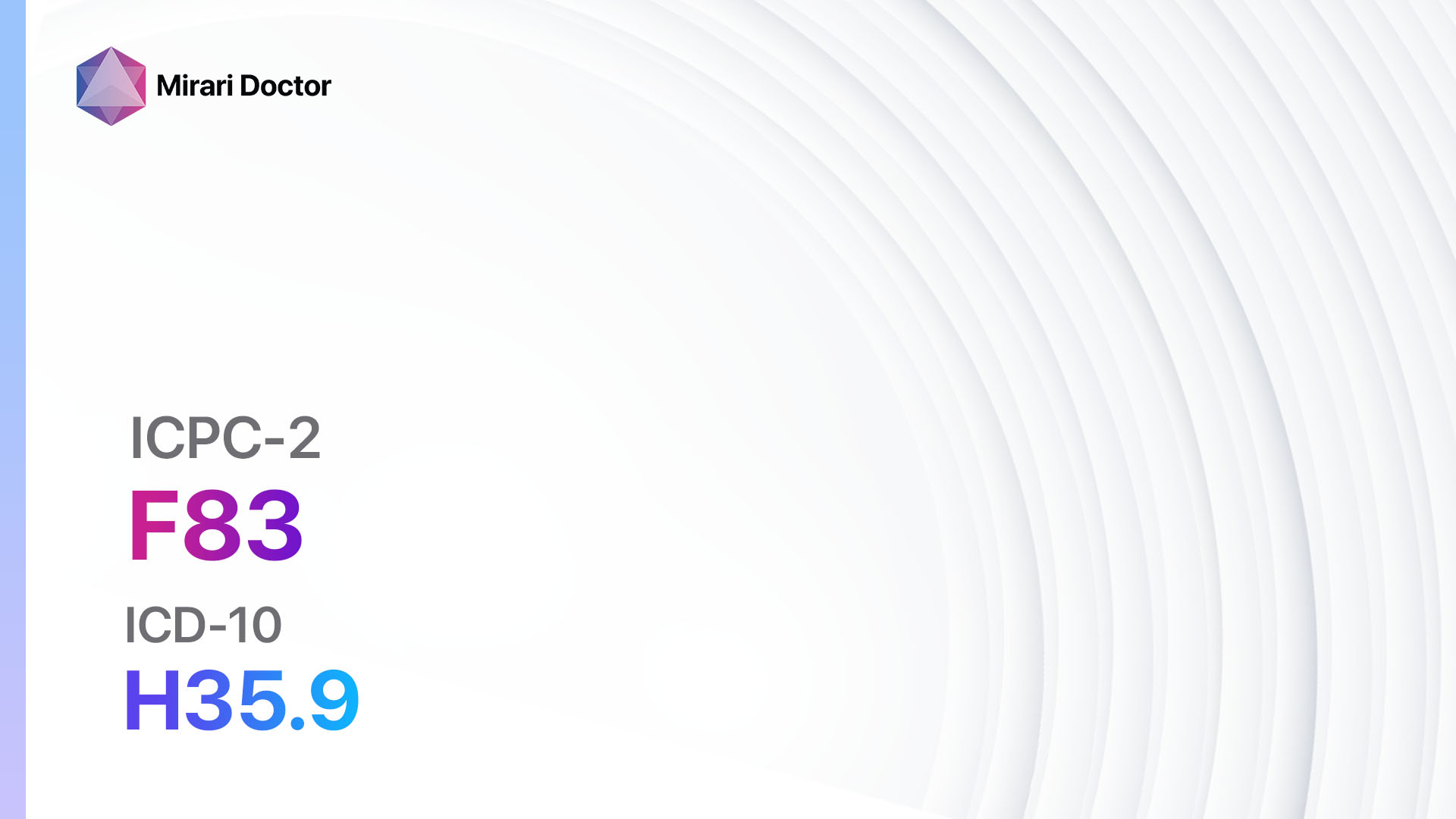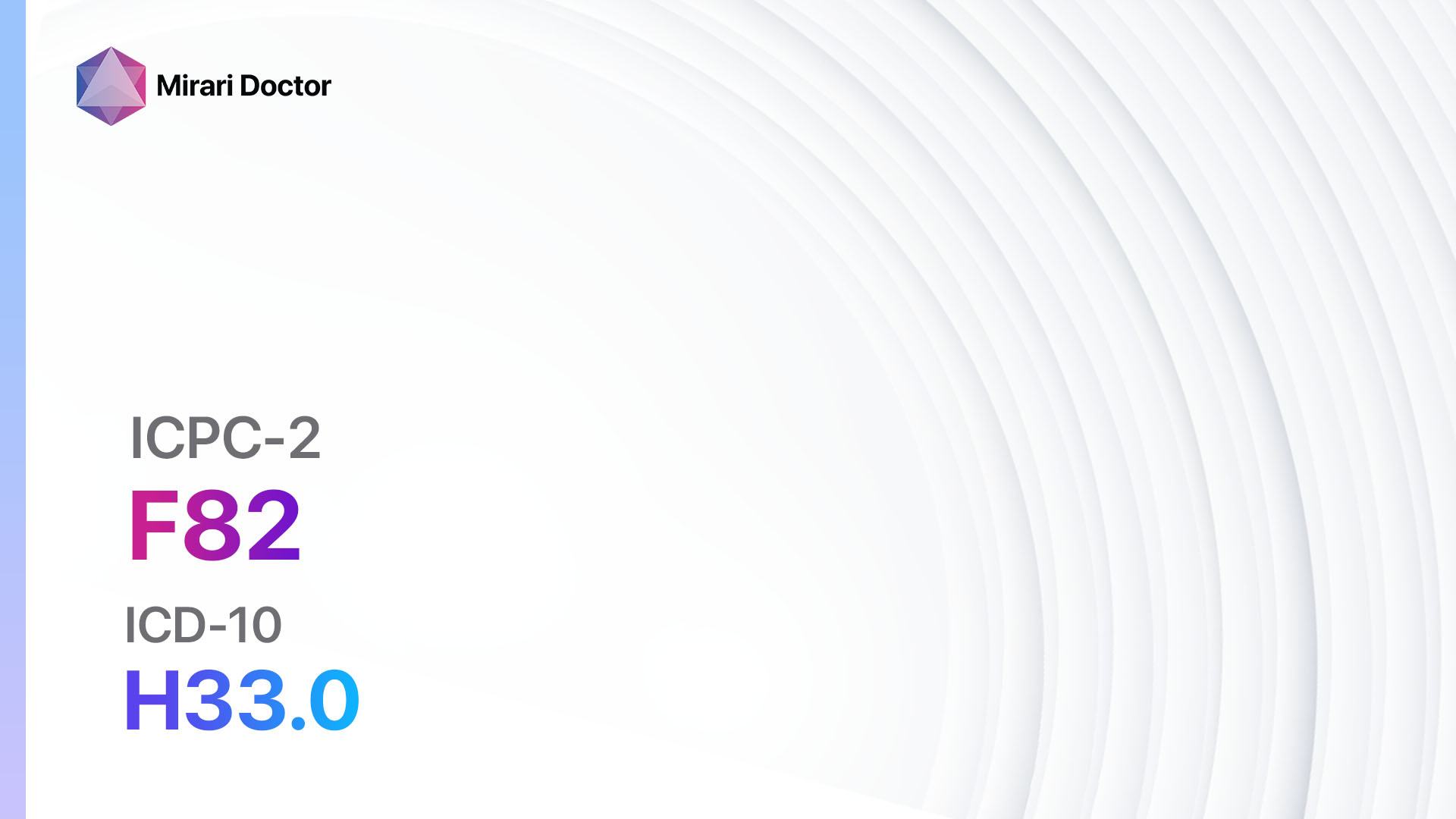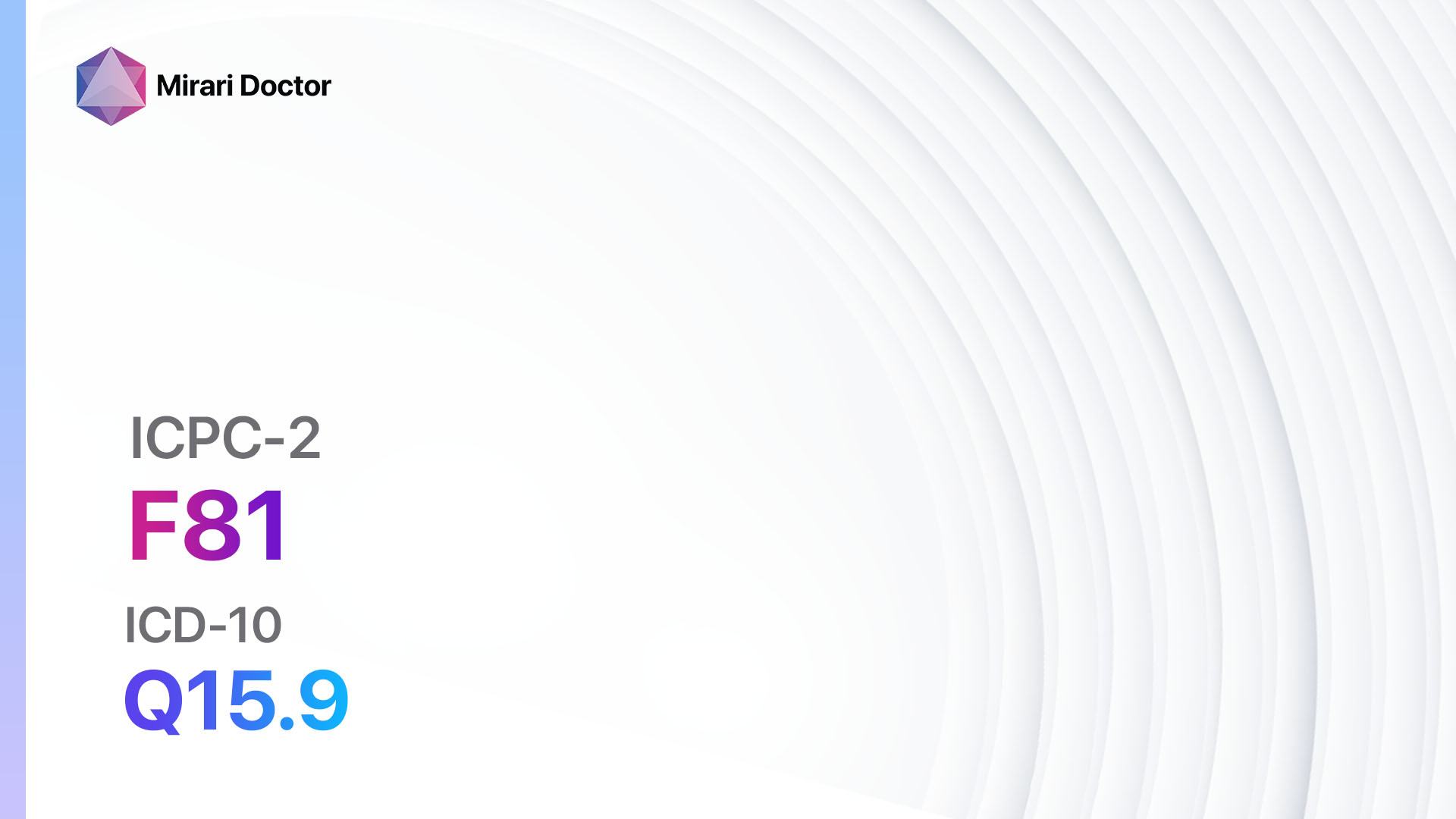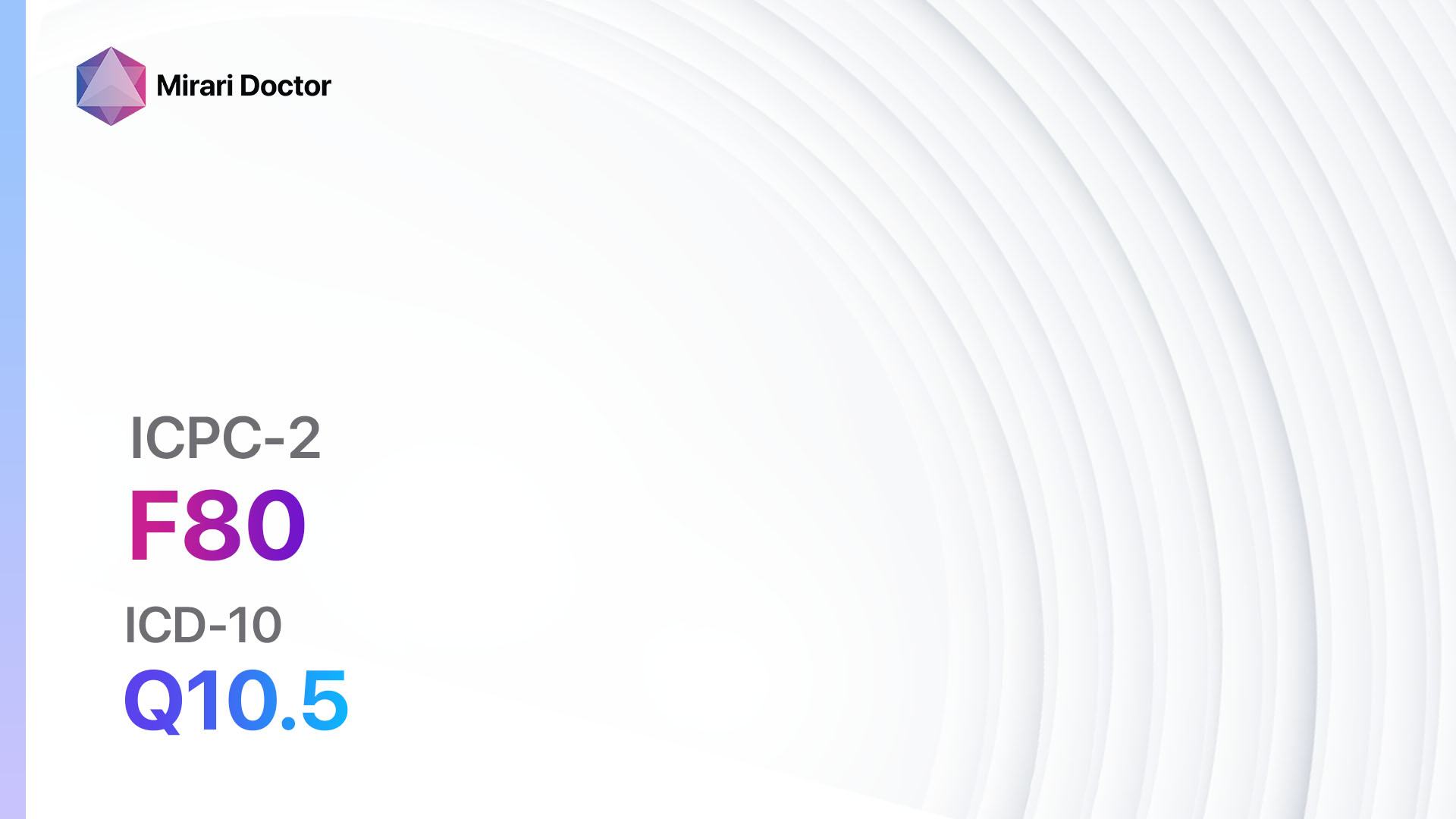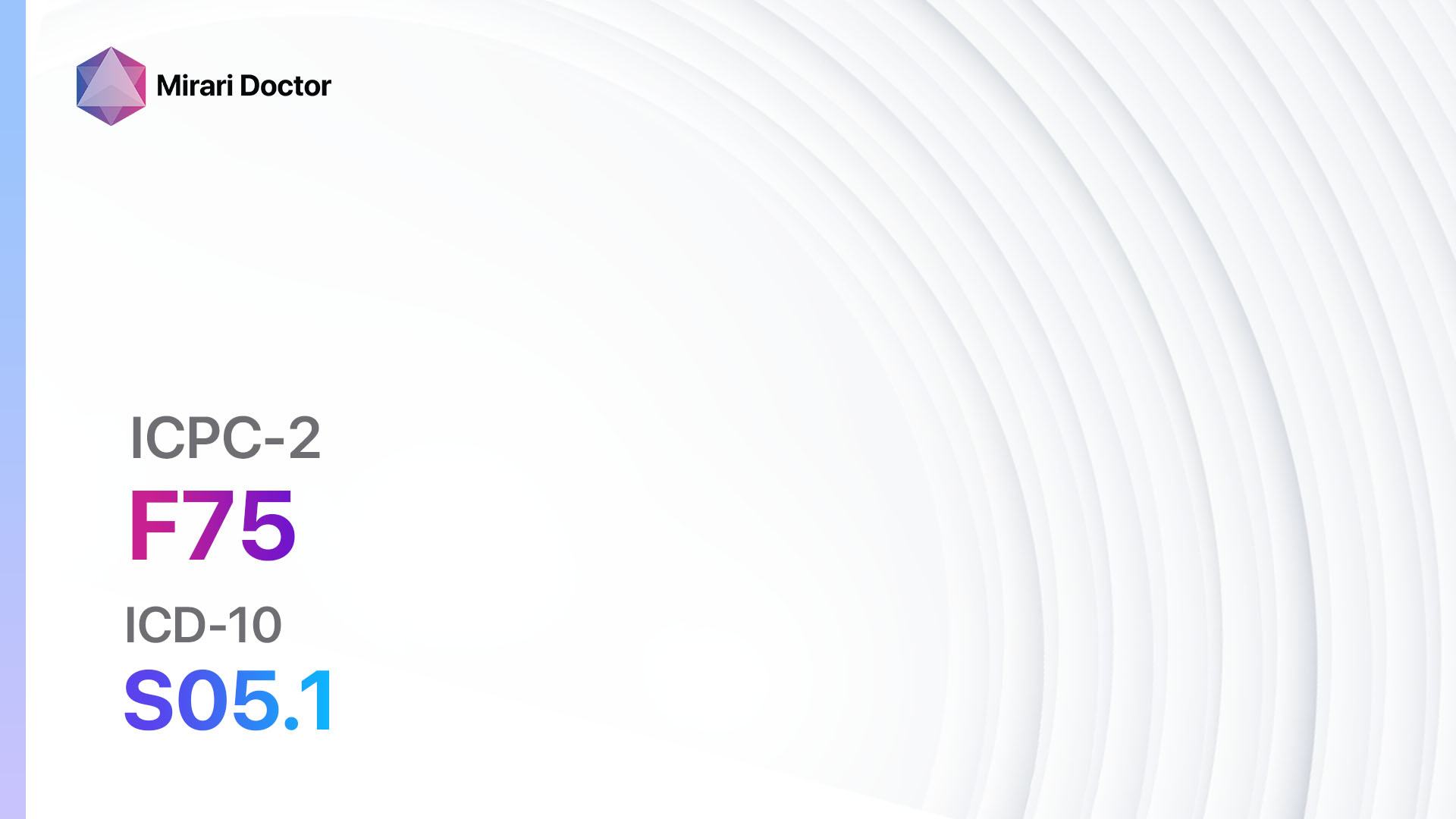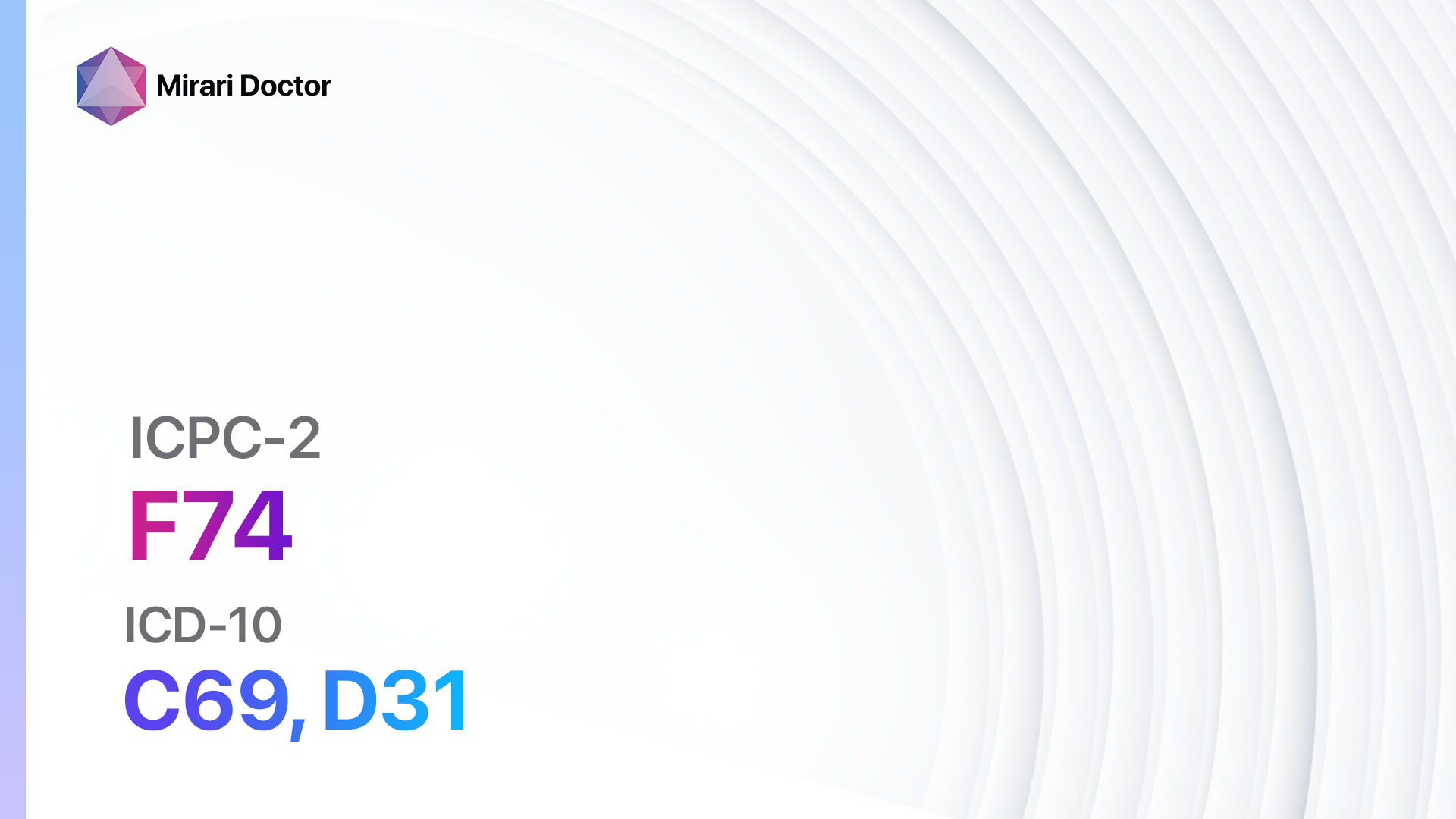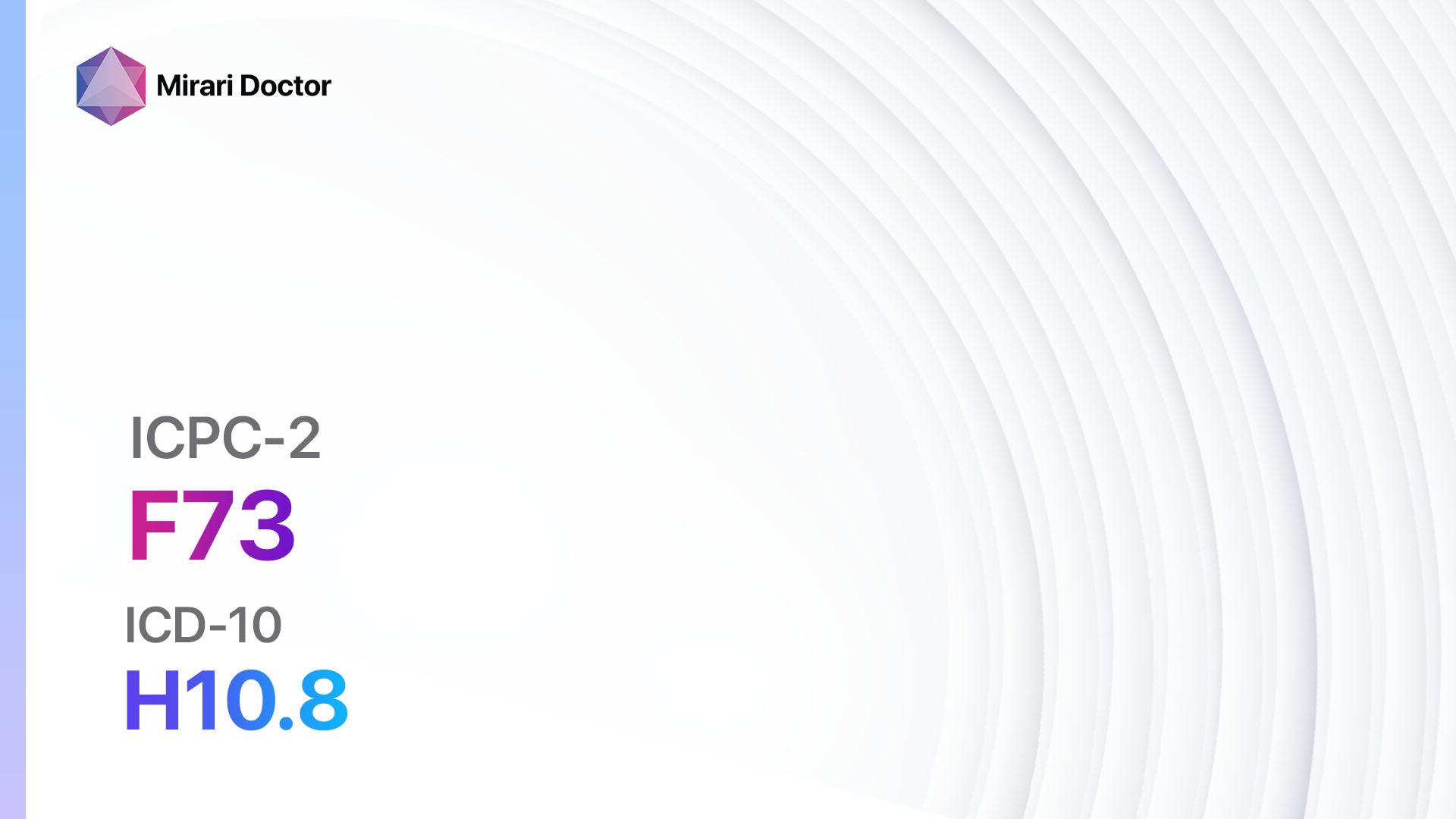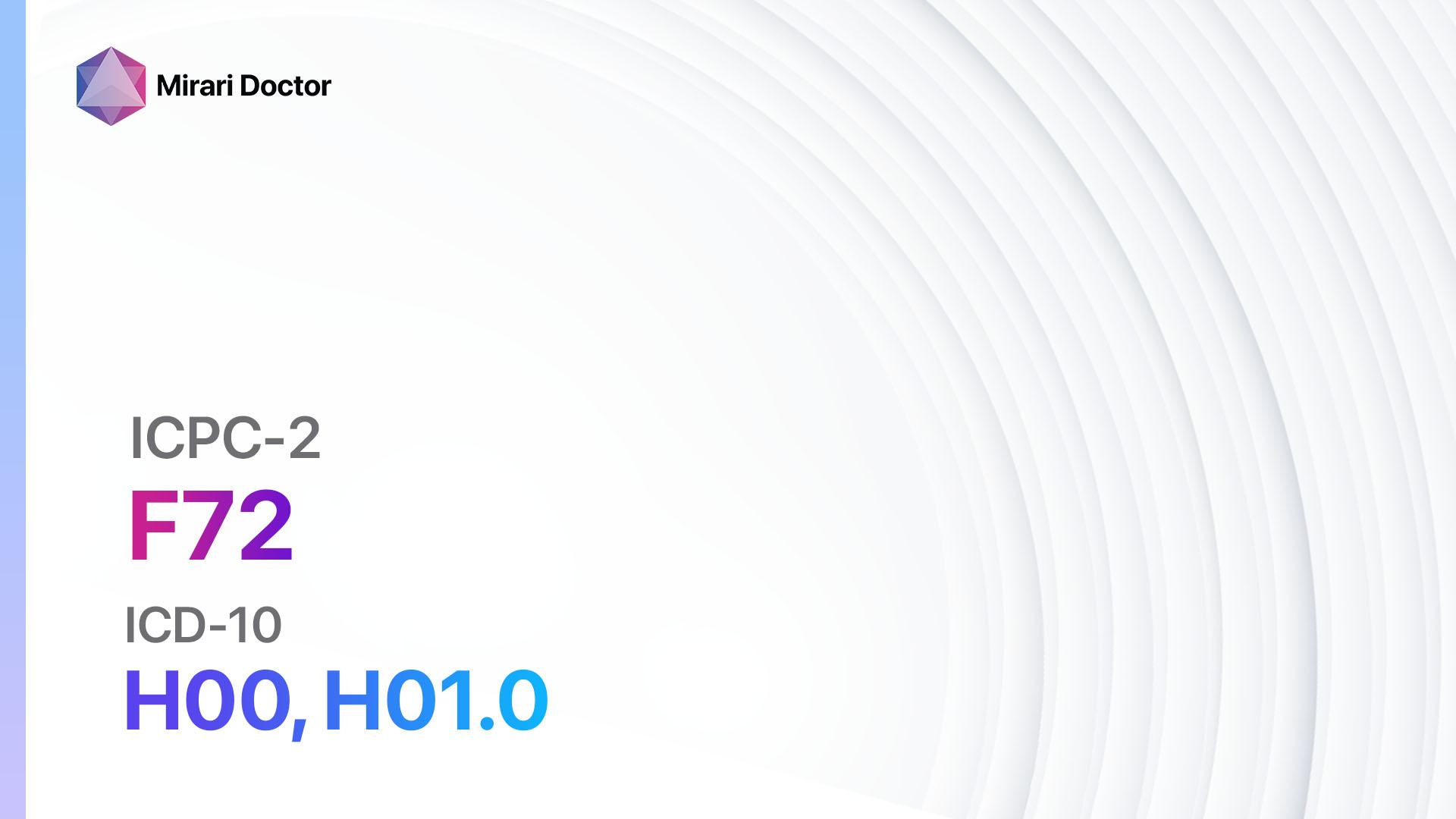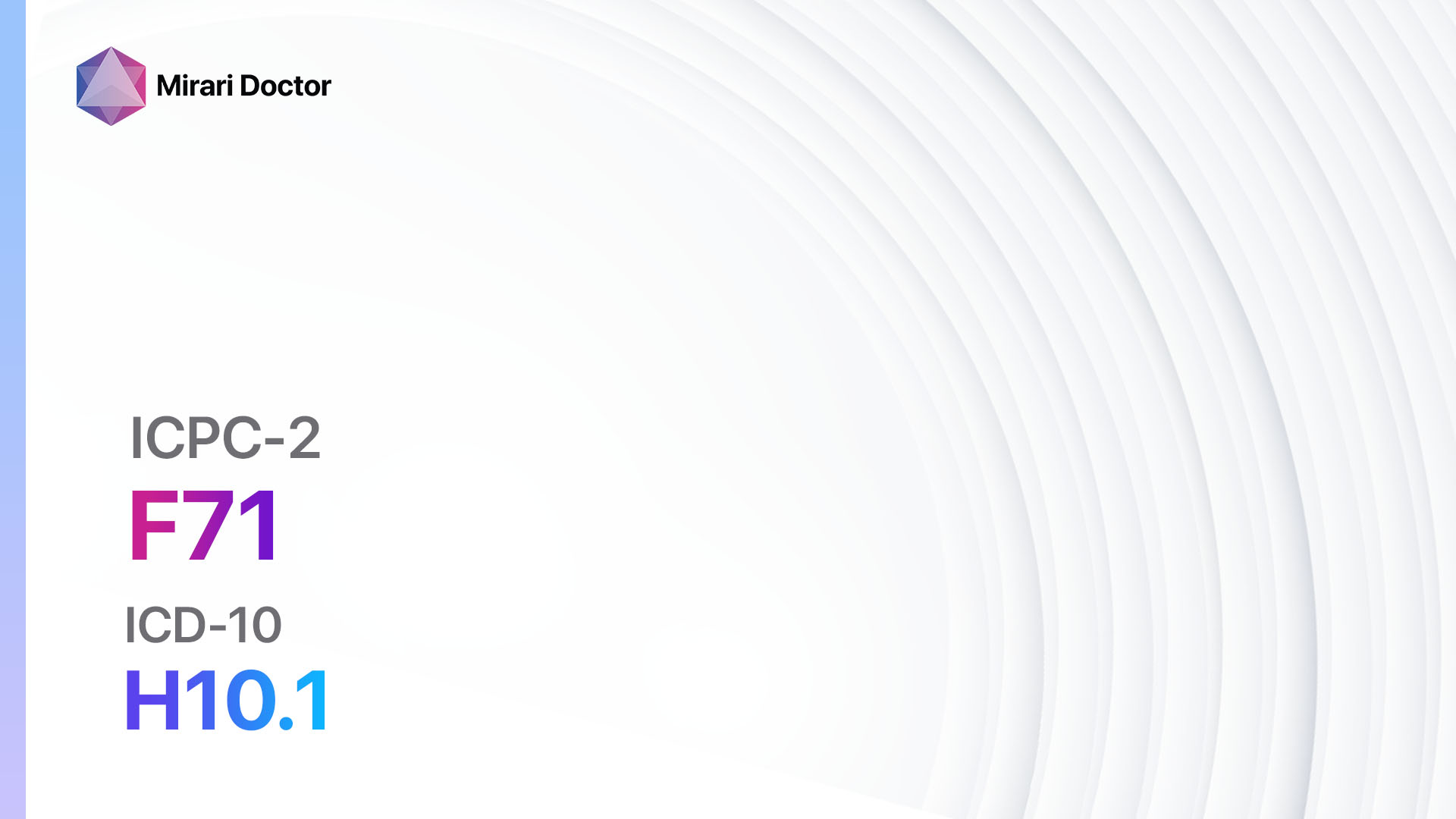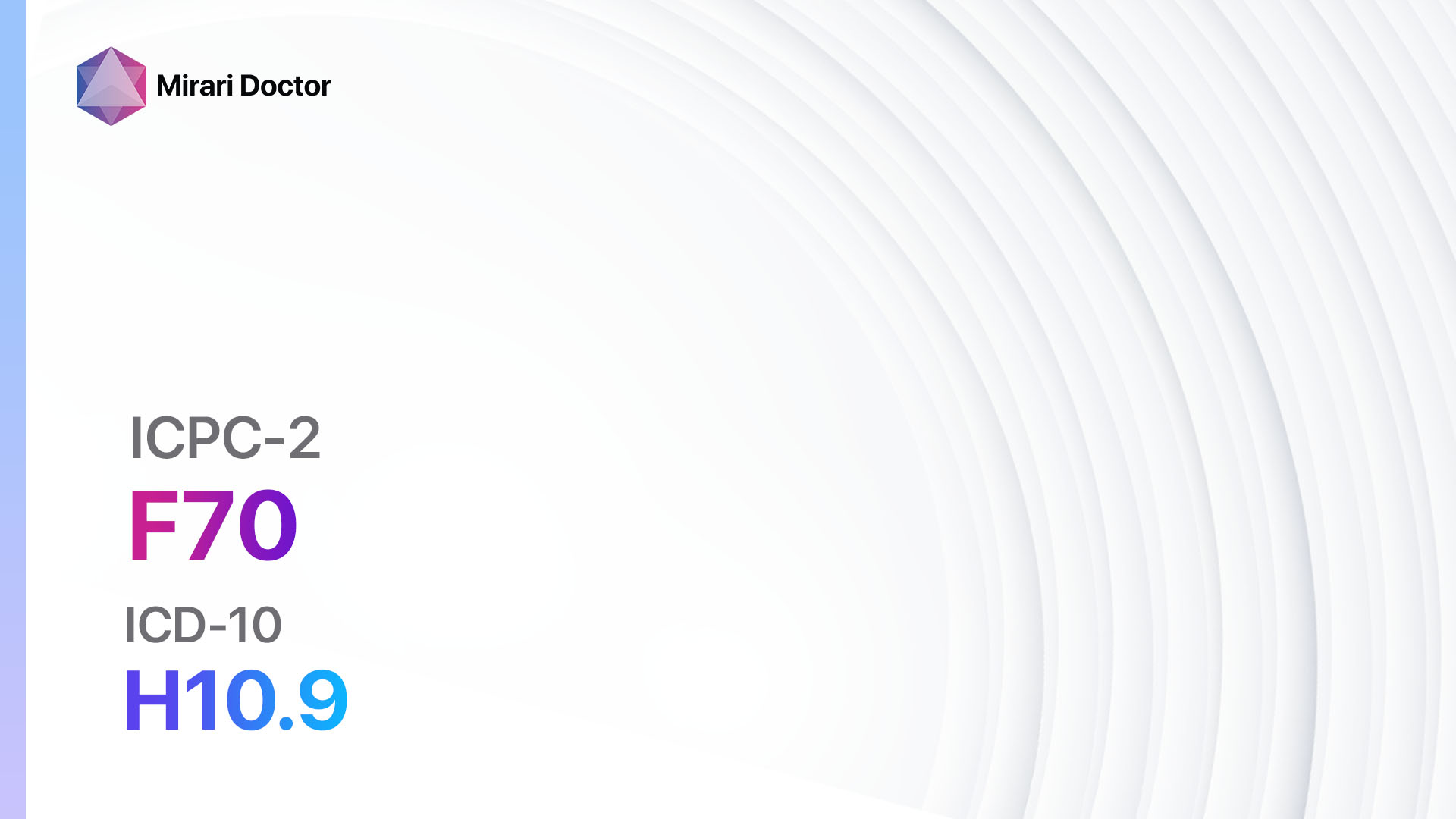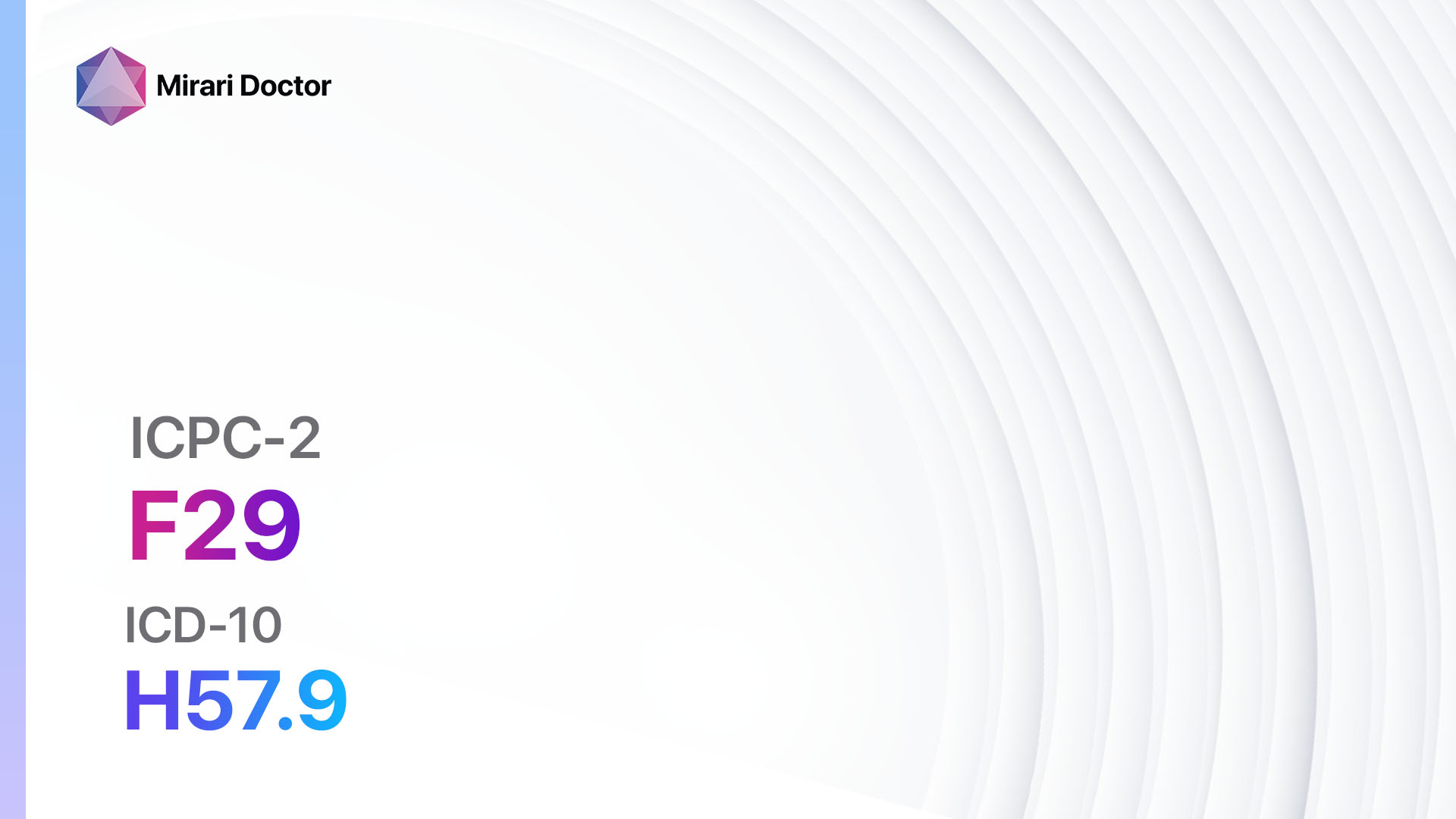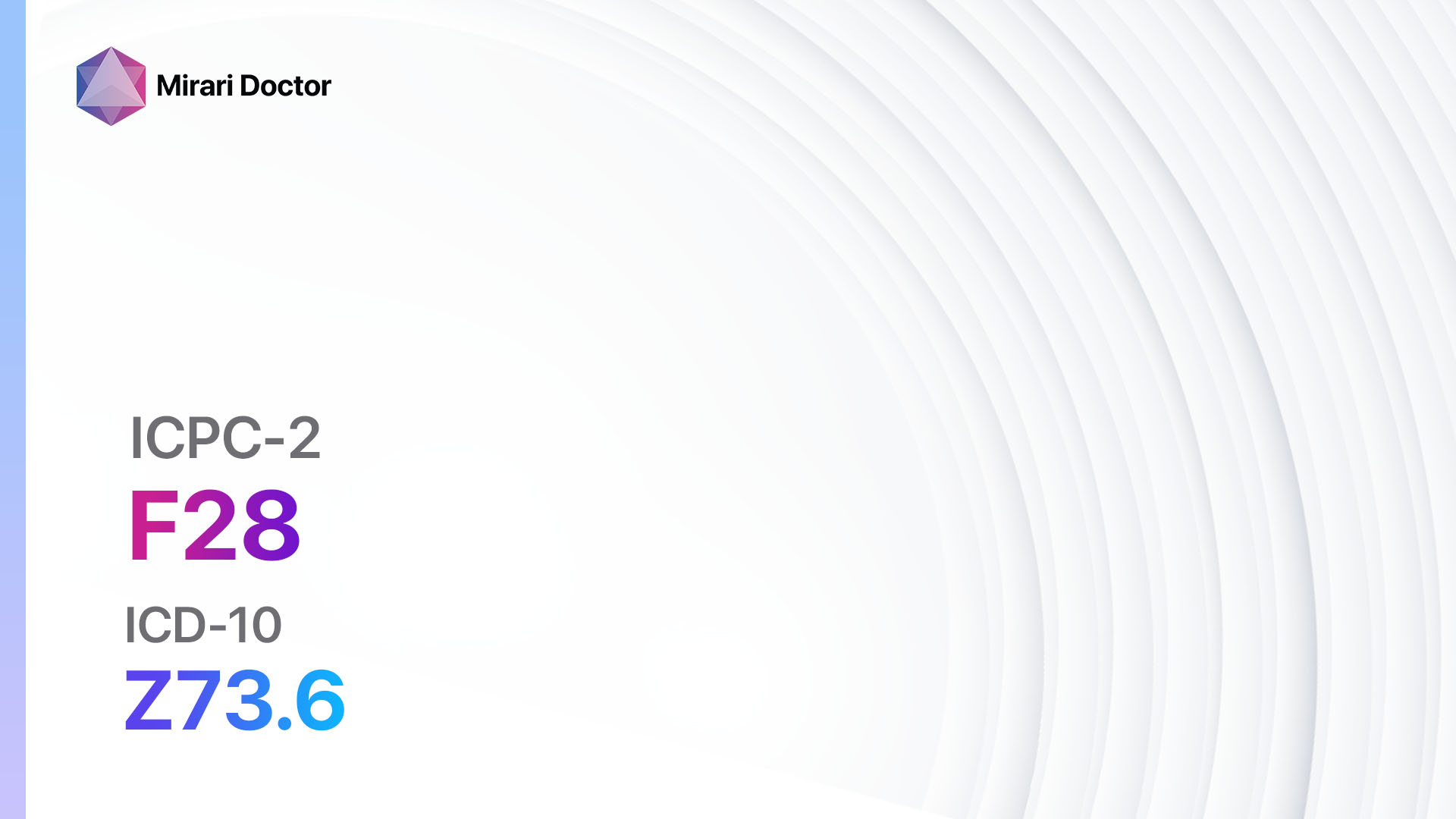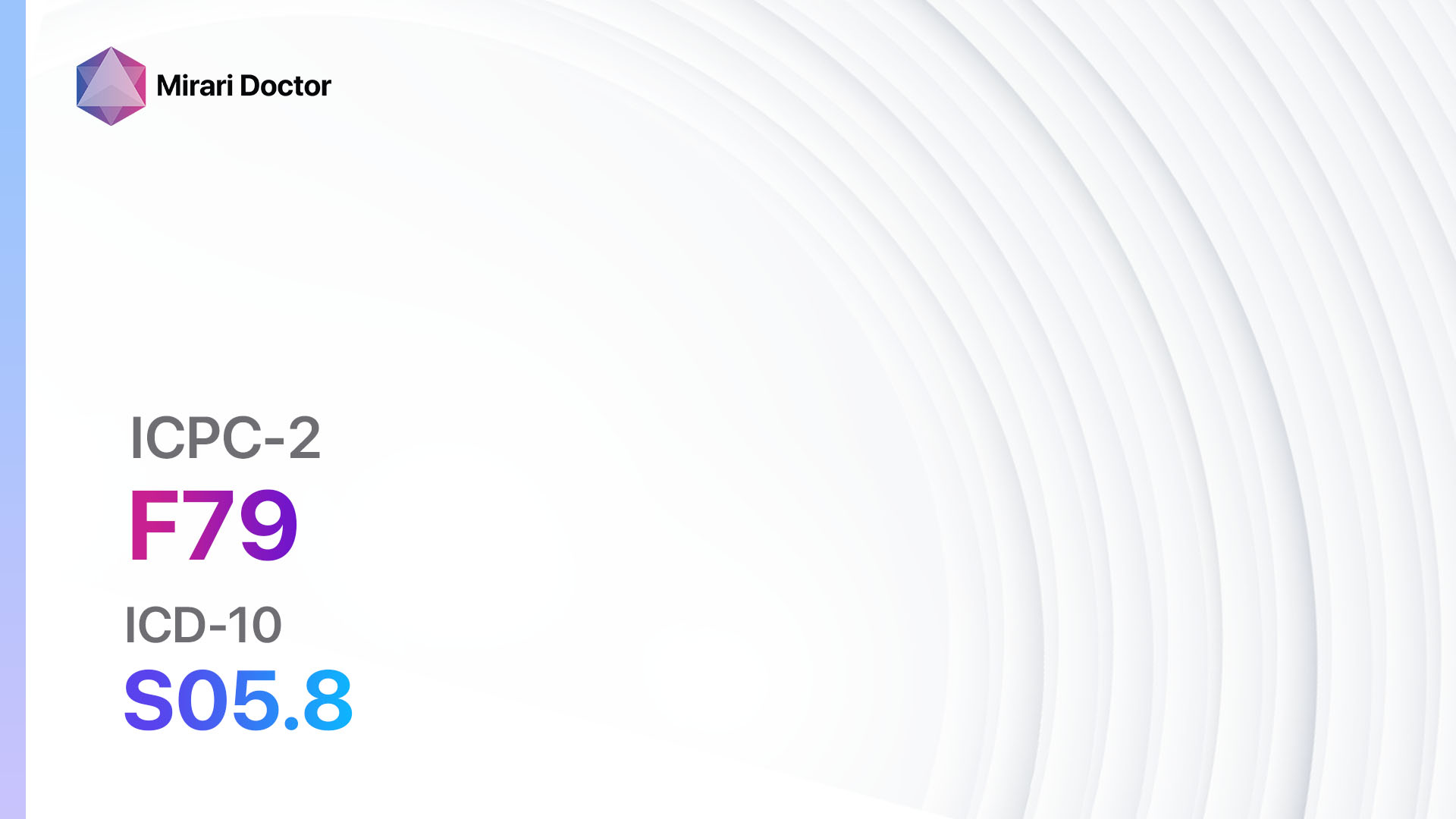
Introduction
Injury to the eye can occur due to various causes, such as trauma, foreign objects, or chemical exposure. It is important to promptly diagnose and treat eye injuries to prevent complications and preserve vision. This guide aims to provide a comprehensive approach to diagnosing and managing eye injuries.[1][2]
Codes
Symptoms
- Eye pain: Patients may experience varying degrees of eye pain, depending on the severity of the injury.[5]
- Redness and swelling: Injured eyes may appear red and swollen.[6]
- Blurred vision: Vision may be affected, ranging from mild blurriness to complete loss of vision.[7]
- Sensitivity to light: Patients may experience increased sensitivity to light, known as photophobia.[8]
- Tearing or discharge: Eye injuries can cause excessive tearing or discharge from the affected eye.[9]
Causes
- Trauma: Eye injuries can result from blunt trauma, such as a direct blow to the eye or face, or penetrating trauma, such as a foreign object entering the eye.[10]
- Chemical exposure: Exposure to chemicals, such as acids or alkalis, can cause severe eye injuries.
- Radiation: Exposure to certain types of radiation, such as ultraviolet (UV) rays or infrared radiation, can damage the eyes.
Diagnostic Steps
Medical History
- Gather information about the circumstances surrounding the injury, such as the nature of the trauma or the type of chemical exposure.
- Inquire about any pre-existing eye conditions or previous eye injuries.
- Ask about symptoms, including pain, redness, blurred vision, and sensitivity to light.
Physical Examination
- Inspect the affected eye for signs of trauma, such as redness, swelling, or foreign objects.
- Assess visual acuity using a Snellen chart or other appropriate methods.
- Perform a slit-lamp examination to evaluate the anterior segment of the eye, including the cornea, iris, and lens.
- Check for signs of intraocular pressure, such as increased or decreased pressure.
Laboratory Tests
- No specific laboratory tests are typically required for diagnosing eye injuries.
- However, if there is suspicion of infection, a conjunctival swab or culture may be obtained.
Diagnostic Imaging
- X-ray: X-rays may be useful in detecting foreign bodies or fractures in the orbit.
- CT scan: CT scans provide detailed images of the eye and surrounding structures, helping to identify fractures, orbital hemorrhage, or foreign bodies.
- MRI: MRI scans may be used to evaluate soft tissue injuries or suspected optic nerve damage.
Other Tests
- Fluorescein staining: Fluorescein dye can be used to detect corneal abrasions or ulcers.
- Tonometry: This test measures intraocular pressure and can help diagnose conditions such as glaucoma.
- Visual field testing: Visual field testing assesses peripheral vision and can detect any visual field defects.
Follow-up and Patient Education
- Schedule follow-up appointments to monitor the progress of the injury and ensure appropriate healing.
- Educate patients about the importance of adhering to treatment regimens and avoiding activities that may worsen the injury.
- Provide information on eye protection measures to prevent future injuries.
Possible Interventions
Traditional Interventions
Medications:
Top 5 drugs for eye injuries:
- Antibiotic eye drops (e.g., Ciprofloxacin, Tobramycin):
- Cost: $10-$50 per bottle.
- Contraindications: Hypersensitivity to the medication.
- Side effects: Temporary stinging or burning sensation.
- Severe side effects: Allergic reactions.
- Drug interactions: None significant.
- Warning: Use as directed and complete the full course of treatment.
- Steroid eye drops (e.g., Prednisolone, Dexamethasone):
- Cost: $10-$50 per bottle.
- Contraindications: Active viral or fungal eye infections.
- Side effects: Temporary increase in eye pressure, cataract formation.
- Severe side effects: None significant with short-term use.
- Drug interactions: None significant.
- Warning: Use as directed and do not abruptly stop treatment.
- Artificial tears (e.g., Refresh Tears, Systane):
- Cost: $5-$20 per bottle.
- Contraindications: Hypersensitivity to the ingredients.
- Side effects: None significant.
- Severe side effects: None.
- Drug interactions: None significant.
- Warning: Use as needed for relief of dryness or irritation.
- Nonsteroidal anti-inflammatory drugs (NSAIDs) (e.g., Ketorolac, Nepafenac):
- Cost: $10-$50 per bottle.
- Contraindications: Active peptic ulcer disease, bleeding disorders.
- Side effects: Temporary stinging or burning sensation.
- Severe side effects: None significant with short-term use.
- Drug interactions: None significant.
- Warning: Use as directed and do not exceed recommended duration of use.
- Cycloplegic eye drops (e.g., Tropicamide, Cyclopentolate):
- Cost: $10-$50 per bottle.
- Contraindications: Narrow-angle glaucoma, hypersensitivity to the medication.
- Side effects: Temporary blurred vision, increased sensitivity to light.
- Severe side effects: None significant with short-term use.
- Drug interactions: None significant.
- Warning: Use as directed and avoid driving or operating machinery while vision is blurred.
Alternative Drugs:
- Oral analgesics (e.g., Acetaminophen, Ibuprofen): May be used for pain relief, but caution should be exercised to avoid masking symptoms or delaying appropriate medical care.
- Antihistamine eye drops (e.g., Ketotifen, Olopatadine): Useful for allergic eye conditions, but not typically indicated for eye injuries.
- Vasoconstrictor eye drops (e.g., Naphazoline, Phenylephrine): Can help reduce eye redness, but should be used cautiously and for short durations.
Surgical Procedures:
- Foreign body removal: Surgical intervention may be necessary to remove foreign objects embedded in the eye.
- Repair of lacerations: In cases of severe eye injuries with lacerations, surgical repair may be required.
- Corneal transplant: In cases of extensive corneal damage, a corneal transplant may be considered.
Alternative Interventions
- Acupuncture: May help alleviate pain and promote healing. Cost: $60-$120 per session.
- Cold compresses: Applying cold compresses to the affected eye can help reduce swelling and relieve pain. Cost: Minimal.
- Eye patching: Patching the injured eye can provide protection and promote healing. Cost: Minimal.
- Homeopathic remedies: Some homeopathic remedies, such as Calendula or Euphrasia, may be used to support eye healing. Cost: Varies depending on the specific remedy.
- Eye exercises: Certain eye exercises may help improve eye muscle strength and coordination. Cost: Minimal.
Lifestyle Interventions
- Eye protection: Encourage the use of appropriate eye protection, such as safety goggles or glasses, during activities that pose a risk of eye injury. Cost: Varies depending on the type of eye protection.
- Proper hygiene: Emphasize the importance of maintaining good eye hygiene, including regular handwashing and avoiding touching or rubbing the eyes unnecessarily. Cost: Minimal.
- UV protection: Advise patients to wear sunglasses with UV protection to shield the eyes from harmful UV rays. Cost: Varies depending on the quality of sunglasses.
- Healthy diet: Promote a healthy diet rich in fruits and vegetables, which can provide essential nutrients for eye health. Cost: Varies depending on food choices.
- Smoking cessation: Encourage patients to quit smoking, as smoking can increase the risk of eye injuries and other eye conditions. Cost: Varies depending on the method used for smoking cessation.
It is important to note that the cost ranges provided are approximate and may vary depending on the location and availability of the interventions.
Mirari Cold Plasma Alternative Intervention
Understanding Mirari Cold Plasma
- Safe and Non-Invasive Treatment: Mirari Cold Plasma is a safe and non-invasive treatment option for various skin conditions. It does not require incisions, minimizing the risk of scarring, bleeding, or tissue damage.
- Efficient Extraction of Foreign Bodies: Mirari Cold Plasma facilitates the removal of foreign bodies from the skin by degrading and dissociating organic matter, allowing easier access and extraction.
- Pain Reduction and Comfort: Mirari Cold Plasma has a local analgesic effect, providing pain relief during the treatment, making it more comfortable for the patient.
- Reduced Risk of Infection: Mirari Cold Plasma has antimicrobial properties, effectively killing bacteria and reducing the risk of infection.
- Accelerated Healing and Minimal Scarring: Mirari Cold Plasma stimulates wound healing and tissue regeneration, reducing healing time and minimizing the formation of scars.
Mirari Cold Plasma Prescription
Video instructions for using Mirari Cold Plasma Device – F79 Injury eye other (ICD-10:S05.8)
| Mild | Moderate | Severe |
| Mode setting: 1 (Infection) Location: 7 (Neuro system & ENT) Morning: 15 minutes, Evening: 15 minutes |
Mode setting: 1 (Infection) Location: 7 (Neuro system & ENT) Morning: 30 minutes, Lunch: 30 minutes, Evening: 30 minutes |
Mode setting: 1 (Infection) Location: 7 (Neuro system & ENT) Morning: 30 minutes, Lunch: 30 minutes, Evening: 30 minutes |
| Mode setting: 2 (Wound Healing) Location: 7 (Neuro system & ENT) Morning: 15 minutes, Evening: 15 minutes |
Mode setting: 2 (Wound Healing) Location: 7 (Neuro system & ENT) Morning: 30 minutes, Lunch: 30 minutes, Evening: 30 minutes |
Mode setting: 2 (Wound Healing) Location: 7 (Neuro system & ENT) Morning: 30 minutes, Lunch: 30 minutes, Evening: 30 minutes |
| Mode setting: 3 (Antiviral Therapy) Location: 7 (Neuro system & ENT) Morning: 15 minutes, Evening: 15 minutes |
Mode setting: 3 (Antiviral Therapy) Location: 7 (Neuro system & ENT) Morning: 30 minutes, Lunch: 30 minutes, Evening: 30 minutes |
Mode setting: 3 (Antiviral Therapy) Location: 7 (Neuro system & ENT) Morning: 30 minutes, Lunch: 30 minutes, Evening: 30 minutes |
| Total Morning: 45 minutes approx. $7.50 USD, Evening: 45 minutes approx. $7.50 USD |
Total Morning: 90 minutes approx. $15 USD, Lunch: 90 minutes approx. $15 USD, Evening: 90 minutes approx. $15 USD, |
Total Morning: 90 minutes approx. $15 USD, Lunch: 90 minutes approx. $15 USD, Evening: 90 minutes approx. $15 USD, |
| Usual treatment for 7-60 days approx. $105 USD – $900 USD | Usual treatment for 6-8 weeks approx. $1,890 USD – $2,520 USD |
Usual treatment for 3-6 months approx. $4,050 USD – $8,100 USD
|
 |
|
Use the Mirari Cold Plasma device to treat Injury eye other effectively.
WARNING: MIRARI COLD PLASMA IS DESIGNED FOR THE HUMAN BODY WITHOUT ANY ARTIFICIAL OR THIRD PARTY PRODUCTS. USE OF OTHER PRODUCTS IN COMBINATION WITH MIRARI COLD PLASMA MAY CAUSE UNPREDICTABLE EFFECTS, HARM OR INJURY. PLEASE CONSULT A MEDICAL PROFESSIONAL BEFORE COMBINING ANY OTHER PRODUCTS WITH USE OF MIRARI.
Step 1: Cleanse the Skin
- Start by cleaning the affected area of the skin with a gentle cleanser or mild soap and water. Gently pat the area dry with a clean towel.
Step 2: Prepare the Mirari Cold Plasma device
- Ensure that the Mirari Cold Plasma device is fully charged or has fresh batteries as per the manufacturer’s instructions. Make sure the device is clean and in good working condition.
- Switch on the Mirari device using the power button or by following the specific instructions provided with the device.
- Some Mirari devices may have adjustable settings for intensity or treatment duration. Follow the manufacturer’s instructions to select the appropriate settings based on your needs and the recommended guidelines.
Step 3: Apply the Device
- Place the Mirari device in direct contact with the affected area of the skin. Gently glide or hold the device over the skin surface, ensuring even coverage of the area experiencing.
- Slowly move the Mirari device in a circular motion or follow a specific pattern as indicated in the user manual. This helps ensure thorough treatment coverage.
Step 4: Monitor and Assess:
- Keep track of your progress and evaluate the effectiveness of the Mirari device in managing your Injury eye other. If you have any concerns or notice any adverse reactions, consult with your health care professional.
Note
This guide is for informational purposes only and should not replace the advice of a medical professional. Always consult with your healthcare provider or a qualified medical professional for personal advice, diagnosis, or treatment. Do not solely rely on the information presented here for decisions about your health. Use of this information is at your own risk. The authors of this guide, nor any associated entities or platforms, are not responsible for any potential adverse effects or outcomes based on the content.
Mirari Cold Plasma System Disclaimer
- Purpose: The Mirari Cold Plasma System is a Class 2 medical device designed for use by trained healthcare professionals. It is registered for use in Thailand and Vietnam. It is not intended for use outside of these locations.
- Informational Use: The content and information provided with the device are for educational and informational purposes only. They are not a substitute for professional medical advice or care.
- Variable Outcomes: While the device is approved for specific uses, individual outcomes can differ. We do not assert or guarantee specific medical outcomes.
- Consultation: Prior to utilizing the device or making decisions based on its content, it is essential to consult with a Certified Mirari Tele-Therapist and your medical healthcare provider regarding specific protocols.
- Liability: By using this device, users are acknowledging and accepting all potential risks. Neither the manufacturer nor the distributor will be held accountable for any adverse reactions, injuries, or damages stemming from its use.
- Geographical Availability: This device has received approval for designated purposes by the Thai and Vietnam FDA. As of now, outside of Thailand and Vietnam, the Mirari Cold Plasma System is not available for purchase or use.
References
- Bord, S. P., & Linden, J. (2008). Trauma to the globe and orbit. Emergency medicine clinics of North America, 26(1), 97-123.
- Kuhn, F., & Pieramici, D. J. (Eds.). (2002). Ocular trauma: principles and practice. Thieme.
- ICPC-2 Code: F79 Injury eye other. (n.d.). Retrieved from https://www.rxreasoner.com/icpc2codes/F79
- ICD-10 Code: S05.8 Other injuries of eye and orbit. (n.d.). Retrieved from https://www.findacode.com/icd-10-cm/s05.8x1a-injuries-right-eye-orbit-initial-icd10cm-code.html
- Murray, W J ; Ruddy, M P (1985). Toxic Eye Injury During Induction of Anesthesia. DOI: 10.1097/00007611-198508000-00034
- McKinlay, Joseph R ; Hofmeister, Elizabeth ; Ross, E. Victor ; MacAllister, Waine (1999). EMLA Cream–Induced Eye Injury. DOI: 10.1001/archderm.135.7.855
- Rehany, Uri ; Dorenboim, Yosef ; Lefler, Eli ; Schirer, Emanuel (1994). Clostridium bifermentans Panophthalmitis after Penetrating Eye Injury. DOI: 10.1016/S0161-6420(13)31256-1
- Grinbaum, Aharon ; Ashkenazi, Isaac ; Treister, Giora ; Goldschmied-Reouven, Anna ; Block, Colin S (1994). Exploding bottles: eye injury due to yeast fermentation of an uncarbonated soft drink. DOI: 10.1136/bjo.78.11.883-a
- American Academy of Ophthalmology. (n.d.). Recognizing and Treating Eye Injuries. Retrieved from https://www.aao.org/eye-health/tips-prevention/injuries
- Seattle Children’s. (n.d.). Eye Injury. Retrieved from https://www.seattlechildrens.org/conditions/a-z/eye-injury/
Related articles
Made in USA


